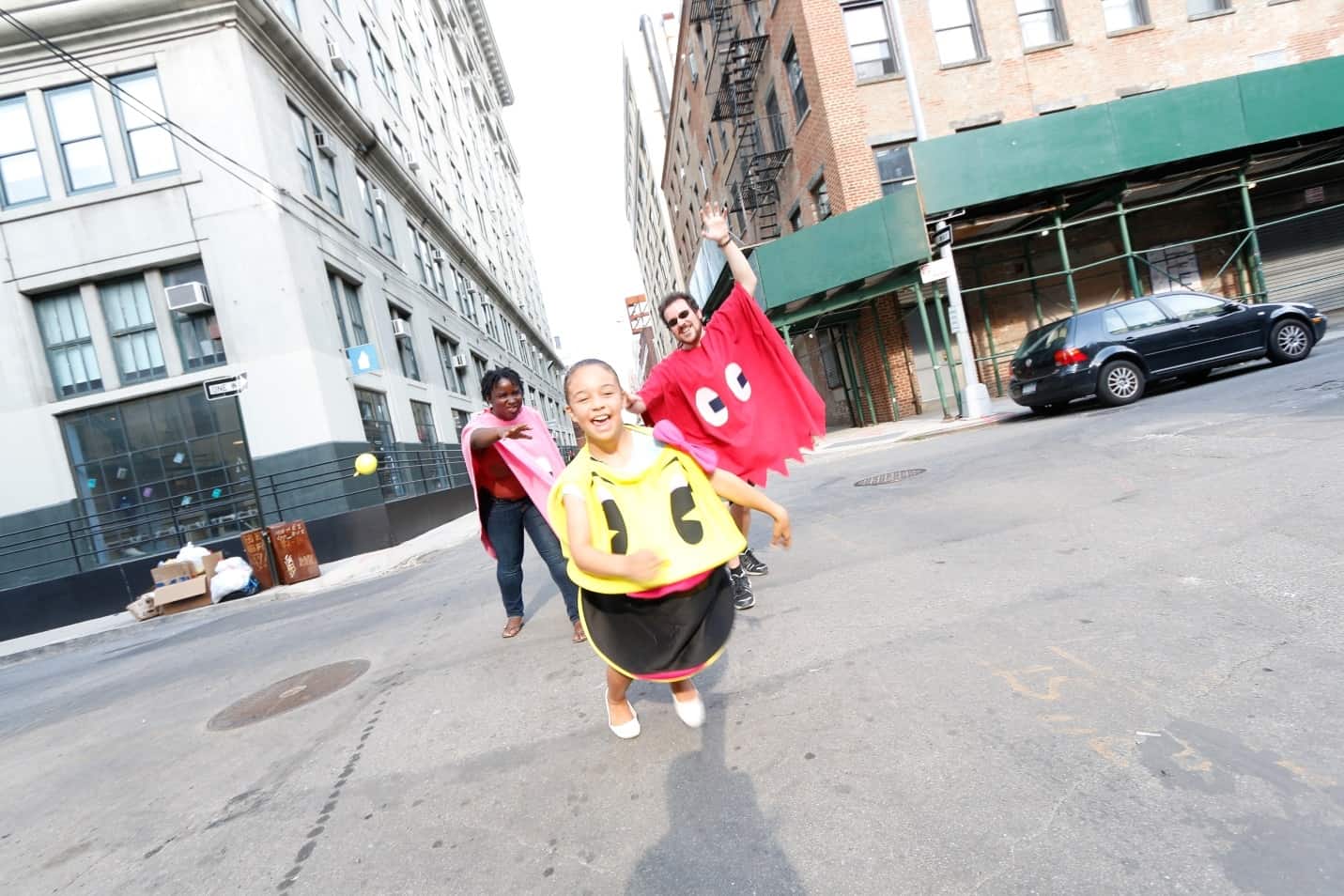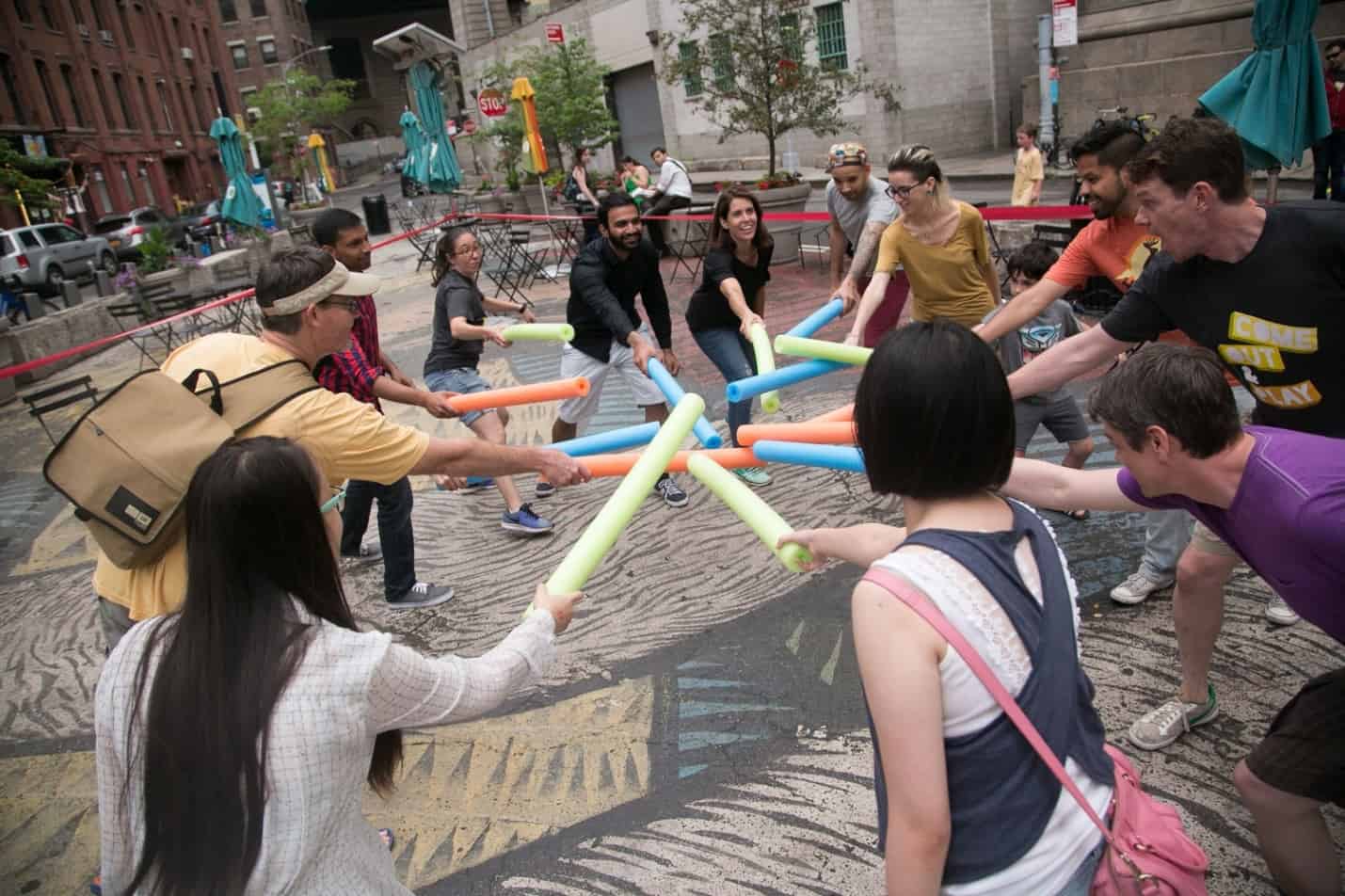Even by New York standards, Nick Fortugno has a radical idea. In a city where people are notoriously loath to make eye contact or take out their earbuds, he wants New Yorkers to run around and be ridiculous in public.
Fortugno, 44, is a co-founder of the Come Out and Play Festival, an annual celebration of street games that’s been running in New York since 2006. It returns to DUMBO this year on July 20.
While playground classics often inspire the games, they’re an order of magnitude more creative than Tag or Red Rover. The titles of some past games should give you an idea: “Pigeon Piñata Pummel,” “Teeny Tiny Soccer,” “Brooklyn Meditation Championships.” Some of the games are played in groups as small as three or four; others can support hundreds of players at once. The thing they all have in common is that the players have to, well, come out and play.
“There’s a certain kind of play that’s performative,” says Fortugno. “Adults don’t want to do it anymore because we get self-conscious. Giving people the excuse to do that is very freeing. The value of play is that it gives me the freedom to do things I wouldn’t normally do.”
 It’s not just the players who bond over the games. Passing New Yorkers do too. Street games are designed to create a spectacle. Fortugno recalls a classic entry in past festivals called “Pac-Manhattan,” where costumed ghosts ran around after a player dressed as the titular munching hero.
It’s not just the players who bond over the games. Passing New Yorkers do too. Street games are designed to create a spectacle. Fortugno recalls a classic entry in past festivals called “Pac-Manhattan,” where costumed ghosts ran around after a player dressed as the titular munching hero.
“When pedestrians see Pac-Man hide behind a car from a ghost, they have to decide what to do about that,” Says Fortugno. Do the pedestrians tip off the ghosts to Pac-Man’s hiding place? Do they point them the wrong way? There’s an infectious goofiness to street games that draws people in. It’s hard to resist the sight of people having a good time, even for the shyest passers-by.
 “The festival programs people to just walk up to an experience and try it,” says game designer Dalton Gray, 26. “And in our normal lives, we try to find ways to avoid those new experiences.”
“The festival programs people to just walk up to an experience and try it,” says game designer Dalton Gray, 26. “And in our normal lives, we try to find ways to avoid those new experiences.”
Gray has two games in the festival this year. The first, “Build and Destroy,” has players constructing a sprawling metropolis out of wooden blocks before natural disasters (including a person in a giant shark costume) whisk it all away. Another is a safari for (ahem) “pocket monsters” where some players try to snap photos of puppets that pop into sight, while others control the creatures themselves.
Clara Schuhmacher, a marketing director for the DUMBO Business Improvement District, says that the festival is a great fit for a neighborhood that prides itself on creativity both in business and art.
“It’s the perfect combination of innovation and play,” says Schuhmacher. “DUMBO is a neighborhood full of artists that are experimenting with their medium.”
Come Out and Play is open to kids and adults alike and is completely free to anyone who wants to come and run around—and who isn’t afraid of getting wet. “If it rains,” says Nick Fortugno, “we run in the rain.”
Ben Masten is a student at CUNY’s Graduate School of Journalism
All images courtesy of Lia Bulaong/ Come Out and Play Festival.









